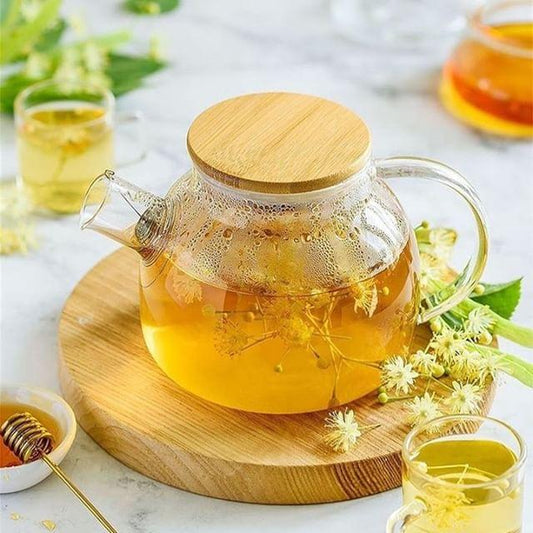Edible Adventures: Foraging for Wild Ingredients

Foraging for wild ingredients is a rewarding way to connect with nature while sourcing fresh, local, and free produce. Whether you're harvesting wild greens, berries, or mushrooms, foraging can introduce you to flavors you won’t find in grocery stores. However, it’s essential to follow safety precautions and start with beginner-friendly plants to ensure a successful and enjoyable experience.
This guide will walk you through the joys of foraging, safety tips, and some easy-to-identify wild edibles to get you started on your edible adventure!
1. Why Try Foraging?
✔ Fresh & Free Ingredients – Wild foods are nutrient-dense and available at no cost.
✔ Sustainable & Local – Eating what grows naturally in your area reduces food waste and carbon footprints.
✔ Connect with Nature – Foraging gets you outside, encouraging mindfulness and appreciation for the environment.
✔ Discover Unique Flavors – Many wild plants have distinctive tastes you won’t find in store-bought produce.
Whether you live in a rural area or near a city, there are abundant edible plants growing in forests, fields, and even urban parks.
2. Foraging Safety Tips
🔹 Learn to Identify Plants Accurately
- Use reliable field guides or foraging apps with clear photos.
- Cross-check sources before consuming any plant.
- When in doubt, don’t eat it—many wild plants have toxic lookalikes.
🔹 Follow the Rule of Sustainable Harvesting
- Take only what you need, leaving enough for wildlife and plant regrowth.
- Never overharvest from a single area—rotate your foraging spots.
- If a plant is rare or endangered, leave it alone.
🔹 Avoid Contaminated Areas
- Stay away from roadsides, industrial areas, or places sprayed with pesticides.
- Wash all foraged ingredients thoroughly.
🔹 Try New Foods in Small Amounts
- Some people may have allergic reactions to wild plants.
- Always sample a small portion first and wait before eating more.
3. Beginner-Friendly Wild Edibles
These plants are easy to identify, widely available, and safe for beginners:
🍃 1. Dandelions (Taraxacum officinale)
✅ Edible Parts: Leaves, flowers, roots
✅ Where to Find: Lawns, meadows, roadsides
✅ How to Use:
- Young leaves add a peppery bite to salads.
- Flowers make dandelion syrup or tea.
- Roots can be roasted for a coffee alternative.
🌱 2. Chickweed (Stellaria media)
✅ Edible Parts: Leaves, stems, flowers
✅ Where to Find: Lawns, gardens, shady areas
✅ How to Use:
- Mild, spinach-like flavor perfect for salads, pesto, or soups.
- Rich in vitamins C and A.
🌿 3. Wild Garlic (Allium ursinum) or Ramps
✅ Edible Parts: Leaves, bulbs, flowers
✅ Where to Find: Woodlands, near streams
✅ How to Use:
- Chop leaves into pestos, soups, or sauces for a garlicky kick.
- Use bulbs like traditional garlic in cooking.
✨ Caution: Avoid confusion with Lily of the Valley, which is toxic. Always check the smell—wild garlic has a strong garlic aroma.
🍓 4. Wild Berries (Blackberries, Raspberries, Mulberries)
✅ Edible Parts: Berries
✅ Where to Find: Forest edges, fields, parks
✅ How to Use:
- Eat fresh or use in jams, pies, and smoothies.
- Packed with antioxidants and natural sweetness.
✨ Caution: Avoid unknown berries—some are toxic.
🍄 5. Edible Mushrooms (Morels, Chanterelles, Chicken of the Woods)
✅ Where to Find: Forests, near dead trees, grassy areas
✅ How to Use:
- Morels – Earthy and rich, delicious sautéed in butter.
- Chanterelles – Peppery, with a slight apricot aroma, great in pasta.
- Chicken of the Woods – A meaty, chicken-like texture perfect for stir-fries.
✨ Caution: Only forage mushrooms with expert guidance—many have deadly lookalikes.
4. How to Store & Prepare Foraged Foods
🔹 Storing Wild Greens & Herbs
- Keep in a damp paper towel inside a sealed container in the fridge.
- Use within 3-5 days for the best freshness.
🔹 Preserving Berries & Fruits
- Freeze: Spread on a tray, then transfer to a bag.
- Dry: Dehydrate for homemade fruit leather or tea.
🔹 Fermenting & Pickling
- Wild garlic makes a fantastic lacto-fermented pesto.
- Pickle ramps or dandelion buds for unique homemade condiments.
5. Simple Foraged Recipes
🍃 Wild Greens Pesto
📝 Ingredients:
- 1 cup wild greens (dandelion, chickweed, wild garlic)
- ½ cup nuts or seeds (sunflower, walnuts)
- ½ cup olive oil
- 2 tbsp lemon juice
- 2 garlic cloves
- Salt & pepper
👩🍳 Instructions:
- Blend all ingredients in a food processor.
- Adjust seasoning and store in a jar.
✨ Use on pasta, sandwiches, or as a dip!
🍓 Wild Berry Jam
📝 Ingredients:
- 2 cups wild berries (blackberries, raspberries)
- ½ cup honey or sugar
- 1 tbsp lemon juice
👩🍳 Instructions:
- Mash berries in a saucepan, then add sugar and lemon juice.
- Simmer for 15 minutes until thickened.
- Store in a jar and refrigerate.
✨ Perfect for toast, yogurt, or baking!
6. Final Thoughts: Embrace the Adventure of Foraging
Foraging is a fun, rewarding way to source fresh ingredients while deepening your connection with nature. By following safety tips, starting with beginner-friendly plants, and experimenting with recipes, you can turn wild food into delicious meals.
So grab a basket, explore your surroundings, and discover the joy of foraging! 🌿🍽️✨
Would you try foraging? Let us know what wild ingredients you’d love to harvest!
Share:





